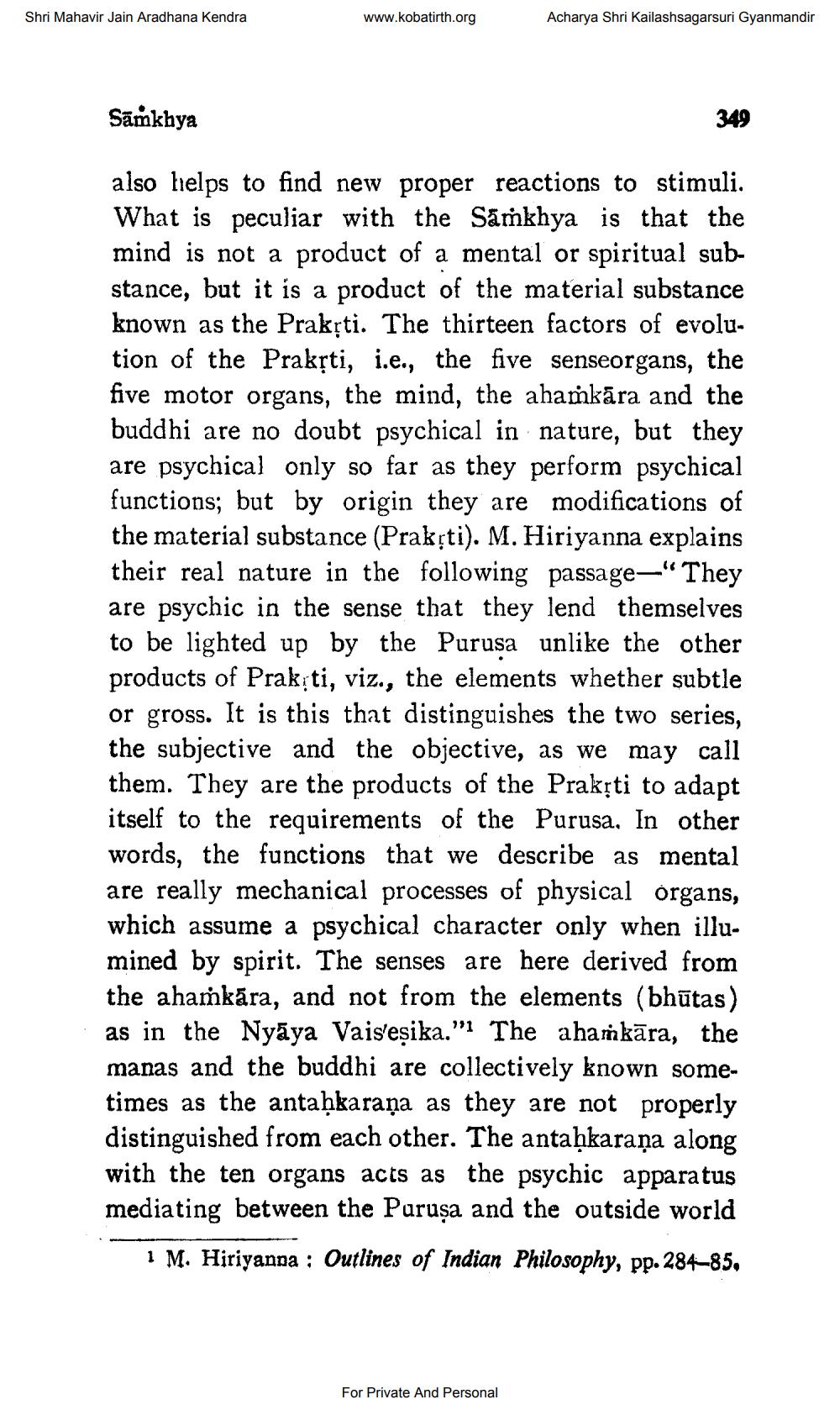________________
Shri Mahavir Jain Aradhana Kendra
www.kobatirth.org
Acharya Shri Kailashsagarsuri Gyanmandir
Samkhya
also helps to find new proper reactions to stimuli. What is peculiar with the Samkhya is that the mind is not a product of a mental or spiritual substance, but it is a product of the material substance known as the Prakṛti. The thirteen factors of evolution of the Prakṛti, i.e., the five senseorgans, the five motor organs, the mind, the ahamkara and the buddhi are no doubt psychical in nature, but they are psychical only so far as they perform psychical functions; but by origin they are modifications of the material substance (Prakṛti). M. Hiriyanna explains their real nature in the following passage-" They are psychic in the sense that they lend themselves to be lighted up by the Purusa unlike the other products of Prakyti, viz., the elements whether subtle or gross. It is this that distinguishes the two series, the subjective and the objective, as we may call them. They are the products of the Prakṛti to adapt itself to the requirements of the Purusa. In other words, the functions that we describe as mental are really mechanical processes of physical organs, which assume a psychical character only when illumined by spirit. The senses are here derived from the ahaṁkāra, and not from the elements (bhūtas) as in the Nyaya Vais'eṣika." The ahamkara, the manas and the buddhi are collectively known sometimes as the antaḥkarana as they are not properly distinguished from each other. The antaḥkarana along with the ten organs acts as the psychic apparatus mediating between the Purușa and the outside world
1 M. Hiriyanna: Outlines of Indian Philosophy, pp. 284-85,
For Private And Personal
349




